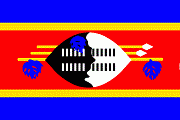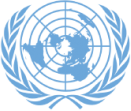History of the Kingdom of Eswatini (Swaziland )
The Swazi people, descended from the Southern Bantu who migrated from Central Africa in the 15th and 16th centuries together with the Xhosas and the Zulus, which belong to the Nguni subgroup. The Swazi ancestors, the Nkosi Dlamini, broke away from the mainstream of Nguni migrants led by Chief Ngwane, and settled in the region of the Pongolo river absorbing the Nguni and Sotho clans in the area.
By 1750 they had settled in the Hluti Region in the South of the Kingdom, under King Ngwane 111 of the Nkosi Dlamini clan. The country derives its name from a later King, Mswati 1. However, Ngwane is an alternative name for Swaziland and Dlamini remains the surname of the royal family, while the name Nkosi means King. The historical evolution of the autonomy of the Swaziland Nation was dictated by British rule of southern Africa in the 19th and 20th centuries. In 1881 the British government signed a convention recognising Swazi independence. However, controversial land and mineral rights concessions were made under the authority of the Foreign Jurisdiction Act of 1890 in terms of which the administration of Swaziland was also placed under that of the then South African Republic (Transvaal).
At the commencement of the Anglo Boer war, Britain placed Swaziland under its direct jurisdiction as a Protectorate and repeated representations especially relating to land issues by the King and his Councillors which affected the political process, were rebuffed. Nevertheless, the Swaziland independence Constitution was promulgated by Britain in November 1963 in terms of which a legislative Council and an Executive Council were established. This development was opposed by the Swazi National Council (ligogo), as it was not in accord with the wishes and aspirations of the Swazi Nation.
Despite such opposition, elections took place and the first Legislative Council of Swaziland was constituted on 9 September 1964. Changes to the original constitution proposed by the Legislative Council, were accepted by Britain and a new Constitution providing for a House of Assembly and Senate, was drawn up. Elections under this Constitution were held in 1967.
Background
The Kingdom of Swaziland is a small landlocked country which covers just over 17,000 square kilometers and is about the same size as Wales. It is arguably the smallest country in the Southern hemisphere, situated between the Republic of South Africa (RSA) and Mozambique at a latitude of 31 degrees, 30 minutes east of Greenwich and a longitude of 26 degrees, 30 minutes south of the equator. The country is often referred to as the Switzerland of Africa. It offers a magnificent mountain scenery with unique, ancient rock formations, which are a source of fascinations for geologists and scholars, as well as visitors.
The Kingdom comprises four topographical and climatic areas, which vary from 400 to 1800 metres above sea level., each with its own climate and characteristics. The mountainous highveld to the west comprises rivers, waterfalls and gorges and has a temperate climate of warm, wet summers and dry winters when the temperature can rise sharply during the day but with cold nights. Covering about 40% of the country. While this area is drought-prone, sugar is successfully grown commercially on a wide scale under irrigation. Cattle faming is also extensively carried out here.
The smallest region is Lubombo, which borders with Mozambique. This subtropical area is typified by mountainous scenery and abundant and animal life Mixed farming is the main activity here. The nearest harbour is at Maputo which is about 235 kilometres from Mbabane, the administrative capital and 200 kilometer from Matsapha, the country’s main industrial area.
Swaziland is one of Africa’s stable countries and enjoys a sound investment climate, and offers:
- Long history of political stability, safe and secure environment
- Free-market economy
- General incentive package offering tax allowances
Dividends, interest, and profits freely repatriated - General Corporate tax of 30%
- A Corporate tax rate of 10% for qualifying investments in Manufacturing Tourism, and International Services Sectors
- Expropriation, and Nationalization is prohibited by law.
Swaziland offers an Excellent Business Infrastructure
- Modern Infrastructure
-
Good quality roads, rail and air link to surrounding countries and beyond
-
Access to advanced factory shells and fully serviced sites mainly in Matsapha Industrial Estate
-
Inland dry port centrally located in Matsapha to minimize time and cost. Easy access to Durban (500 km) and Richards Bay Ports in South Africa (400 km) and Maputo Port in Mozambique (200 km)
-
Modern telecommunication – digital system in place with satellite communication, cellular phones and INTERNET service provider (ISP)
- High quality utilities
- Banking services and finance company
- English speaking skilled and trainable labour
High Quality Life
- Health Facilities at international standards
- Internationally recognized educational and training institution
- World class hotels, golf courses and sports facilities
Basic Information
|
Location |
Situated in Southern Africa, between Mozambique and. South Africa 26 30 South. 31 30 East |
|
Area |
17,363 sq km |
|
Land boundaries |
535 km |
|
Borders |
Mozambique 105 kms, South Africa 430 kms |
|
Climate |
Highveld ; 5000 sq kms with temperate climate suitable for afforestation.
Middleveld; 5000 sq kms, abundant rainfall in summer with good grazing and fertile soils for crops. Lowveld; 6500 sq kms typical African bushveld,with intense sugarcane farming under irrigation Lubombo plateau runs along the eastern border |
|
Elevation extremes |
lowest point: Great Usutu River 21m, |
|
Natural resources |
Coal, clay, cassiterite, hydropower, forests, small gold and diamond deposits, quarry stone, and talc |
|
Land use |
arable land: 11%, permanent pastures: 62%, forests : 7% |
|
Irrigated land |
Approx 1000 sq km |
|
Environmental |
Limited supplies of portable water; wildlife under threat issues because of excessive hunting; overgrazing; soil degradation; soil erosion;Party to international greements on Biodiversity, Climate Change, Endangered species, Nuclear Test Ban, Ozone Layer Protection, desertification, Law of the Sea
|
|
Population |
929 718 |
|
Age structure |
0-14 years: 44.4% (male 204 705; female 208 424) |
|
Population growth rate |
2.9% |
|
Birth rate |
36.4 births/1,000 population |
|
Death rate |
7.6 deaths/1,000 population |
|
Sex ratio |
At birth: 1.03 male(s)/female |
|
Under 15 years |
0.99 male(s)/female |
|
15-64 years and over |
0.93 male(s)/female |
|
65 years and over |
0.69 male(s)/female total population: 0.89 male(s)/female |
|
Infant mortality rate
|
7.8 deaths/1,000 live births |
|
Life expectancy at birth
|
total population: 60 years |
|
Total fertility rate
|
4.5 children born/woman |
|
Ethnic groups |
Swazis 97%, European 3% |
|
Religions |
Protestant 65%, Muslim 10%, Roman Catholic 5%, indigenous beliefs 30%
|
|
Languages |
English (official, government business conducted in English), |
|
Literacy |
age 15 and over can read and write
total population: 76.7% male: 78% female: 75.6% |
|
Government type |
Monarchy; independent member of Commonwealth |
|
Capital |
Mbabane; – Lobamba is the royal and legislative Capital
|
|
Administrative divisions |
4 Regions; Hhohbo, Lubombo, Manzini, Shiselweni
|
|
Independence |
6 September 1968 (from UK) |
|
National holiday |
Independence Day, 6 September (1968) |
|
Constitution |
Independence Constitution of 6 September 1968 suspended 12 April 1973; a new parliament convened on 13 October 1978; a Constitutional Review Commission (CRC), has submitted proposals for a new Constitution to the King
|
|
Legal system |
Based on Roman-Dutch law in statutory courts and Swazi traditional law and custom in traditional courts |
|
Suffrage |
18 years of age |
|
Executive branch |
Head of state: King MSWATI III (since 25 April 1986) |
|
Administration |
Head of government: Prime Minister H.E. Absalom Themba Dlamini |
|
Legislative Branch |
Bicameral Parliament , with House of Assembly and Senate (30 seats – 10 appointed by the House of Assembly and 20 appointed by the monarch; members serve five-year terms) and the House of Assembly (65 seats – 10 appointed by the monarch and 55 elected by popular vote; members serve five-year terms) |
|
Judicial Branch |
High Court; Court of Appeal; judges for both courts are appointed by His Majesty the King |
|
International Organisation |
ACP, AFDB, ECA, FAO, G-77, IBRD, ICAO, ICFTU, ICRM, IDA, IFAD, IFC, IFRCS, ILO, IMF, Intelsat, Interpol, IOC, ITU, NAM, OAU, OPCW, SACU, SADC, UN, UNCTAD, UNESCO, UNIDO, UPU, WHO, WIPO, WMO, WtrO |
|
Diplomatic Representation Abroad |
USA, UK, RSA, Ethiopia (African Union) Mozambique, Belgium and the European Union, Switzerland, Singapore, ROC (Taiwan), Middle East (Kuwait, Dubai) |
|
Diplomatic representation in Swaziland |
UK, USA, RSA, Taiwan(ROC), Germany, Mozambique, Republic of Cyprus, Denmark and Norway, Italy, Netherlands, Portugal, Indonesia, European Union (EU) |
|
Flag description
|
Three horizontal bands of blue (top), red (triple width), and blue; the red band is edged in yellow; centered in the red band is a large black and white shield covering two spears and a staff decorated with feather tassels, all placed horizontally
|
|
Economy
|
|
|
GDP - (2001) |
US$ 1279.4 million |
|
GDP – composition by sector (2001) |
Agriculture: 10% |
|
Inflation rate |
12.6% (2002) |
|
Labour force |
Private sector 69%, public sector 31% |
|
Unemployment rate |
22.8% (1997) |
|
Budget |
Revenues |
|
Industries |
Textiles, wood pulp, sugar, soft drink concentrates |
|
Electricity production |
375 million kWh |
|
Electricity consumption |
198 million kWh |
|
Electricity exports |
852 million kWh (to Mozambique) |
|
Electricity imports |
701 million kWh (from South Africa) |
|
Agriculture |
Sugarcane, cotton, maize, rice, citrus, pineapples, sorghum, peanuts, cattle |
|
Exports |
$881 million (f.o.b., 2000) |
|
Exports commodities |
Soft drink concentrates, sugar, wood pulp, cotton yarn, citrus and canned fruit |
|
Exports – partners |
South Africa 65%, EU 12%, Mozambique 11%, US 5% |
|
Imports commodities |
Motor vehicles, machinery, transport equipment, foodstuffs, petroleum products, chemicals
|
|
Imports– partners |
South Africa 84%, EU 5%, Japan 2%, Singapore 2%
|
|
Debt – external |
US$300 million |
|
Currency |
Emalangeni |
|
Exchange rates |
1 Emalangeni = 1 Rand |
|
Fiscal year |
1 April – 31 March |
.



